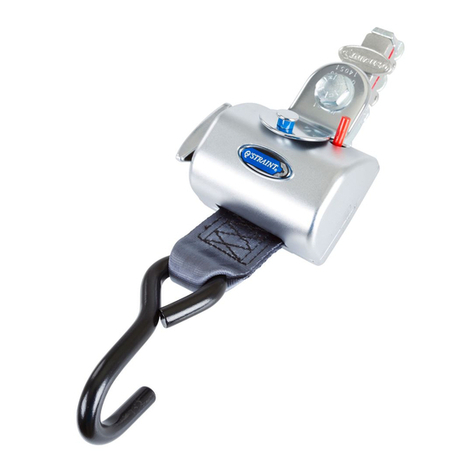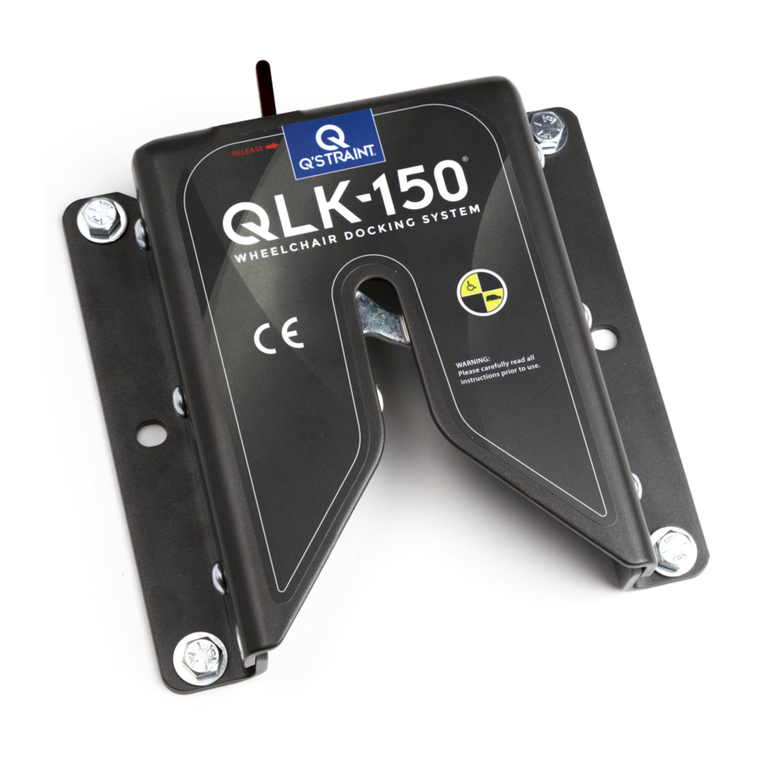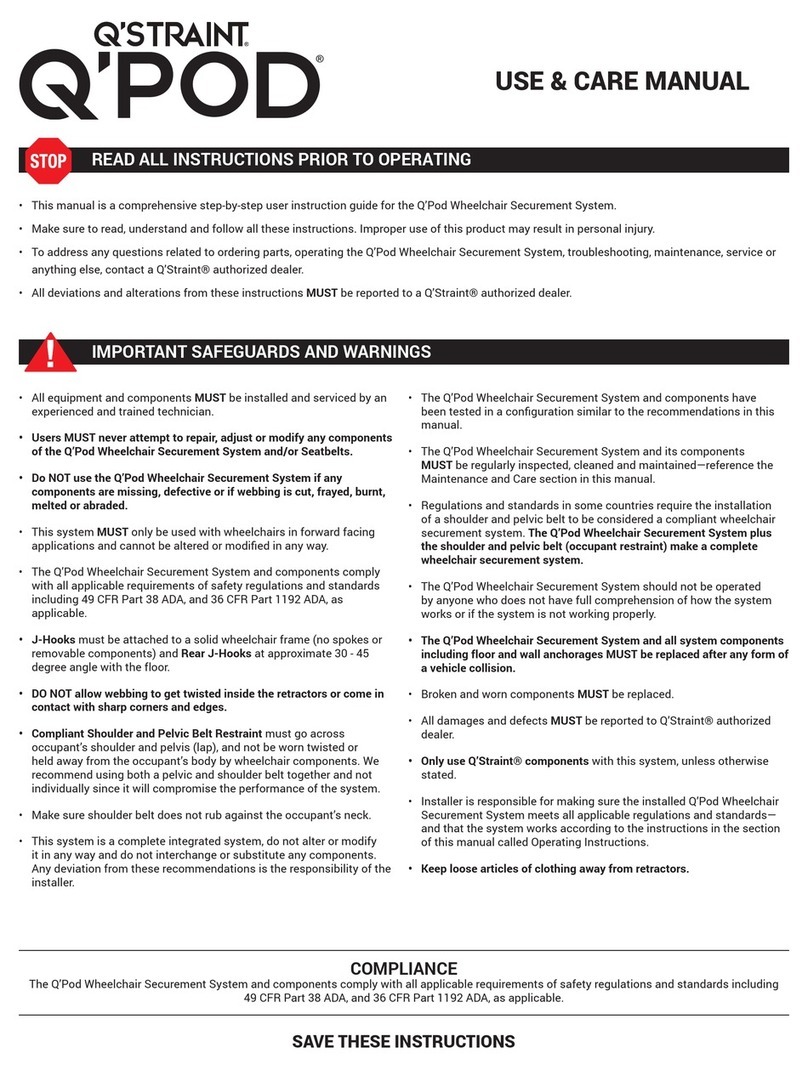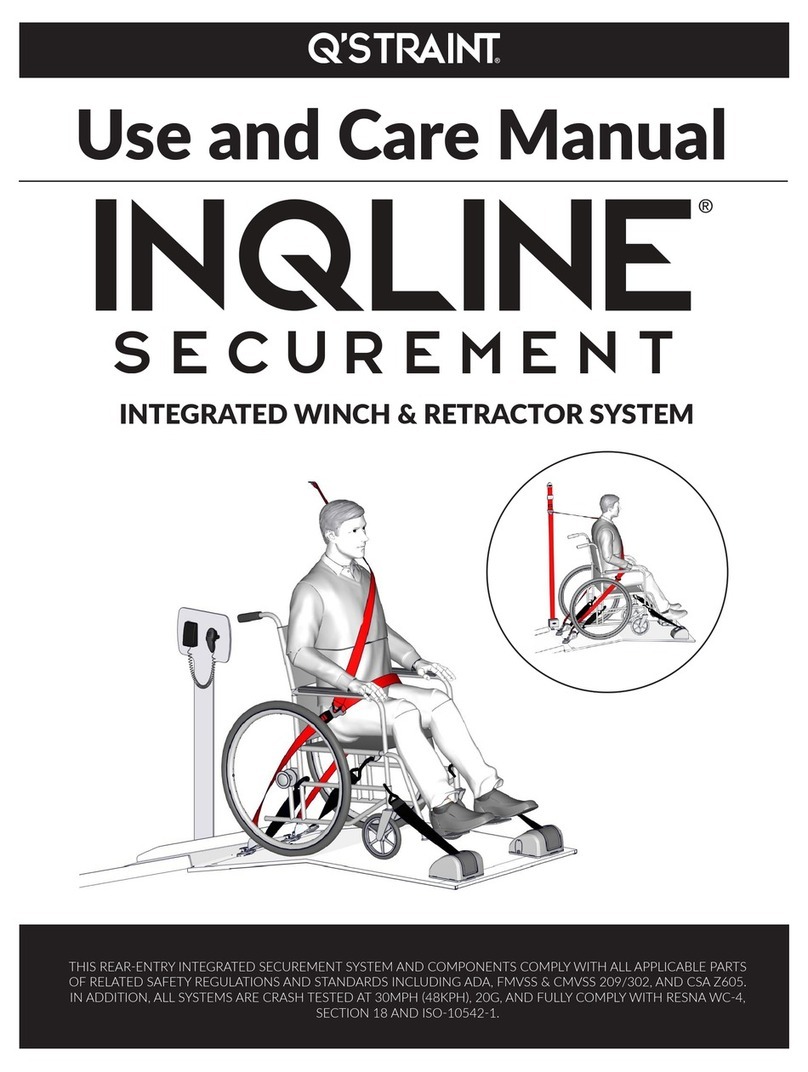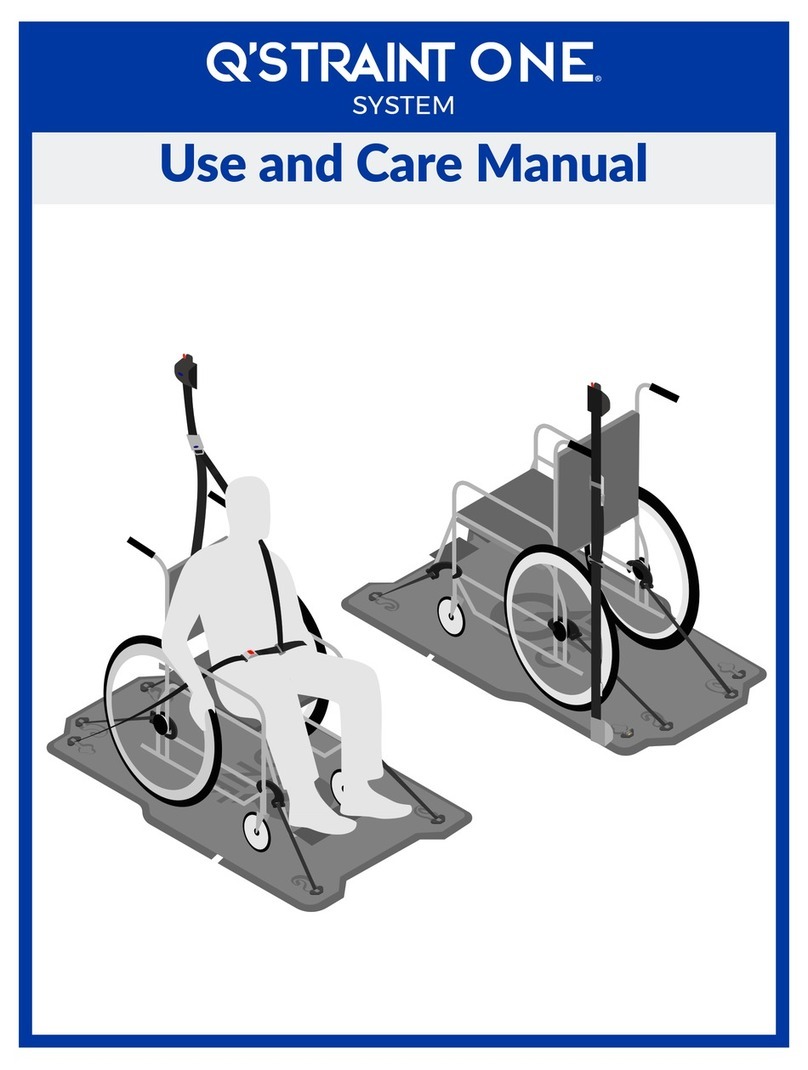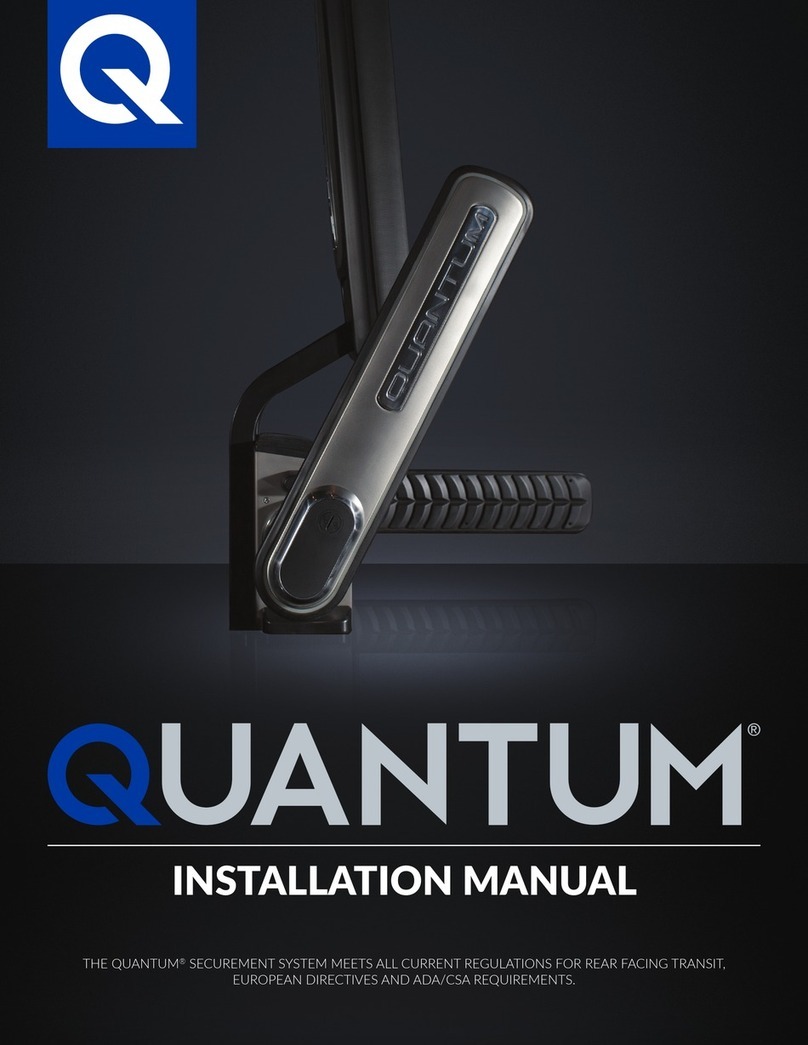
4
IMPORTANT SAFEGUARDS AND WARNINGS
• All equipment and components MUST be installed and serviced by an experienced and trained technician.
• This system MUST only be used with wheelchairs in forward facing applications and cannot be altered or modified in any way.
• The Double Inertia Occupant Belt (3-Point Occupant Restraint System) complies with ISO 10542-1 and Regulation 107, as
applicable.
• Systems are dynamically crash tested at 30mph (48kph), 20g, using a 187 lbs. (85kg) forward facing surrogate wheelchair and
a 168 lbs. (76kg) Anthropomorphic Test Device (ATD). The ATD is restrained by both shoulder and pelvic belt restraints.
• We recommend using the 3-Point Occupant Restraint System with a 4-Point Wheelchair Securement System in
order to provide superior protection for the occupant in case of impact. The 3-Point System MUST be used with an
Upper Anchorage Belt in order to comply with ISO 10542-1. The 2-Point System is NOT ISO 10542-1 compliant and
therefore does NOT provide maximum protection.
• J-Hooks MUST be attached to a solid wheelchair frame (no spokes, wheels or movable components) at an approximate 45
degree angle with floor.
• DO NOT allow webbing to get twisted inside the retractors or come in contact with sharp corners and edges.
• Compliant Shoulder and Pelvic Belt Restraint must go across occupant’s shoulder and pelvis (lap), and not be worn
twisted or held away from the occupant’s body by wheelchair components. We recommend using both a pelvic and
shoulder belt together and not individually since it will compromise the performance of the system.
• Make sure shoulder belt does not rub against the occupant’s neck.
• This system is a complete integrated system, do not alter or modify it in any way and do not interchange or substitute any
components. Any deviation from these recommendations is the responsibility of the installer.
• The Double Inertia Occupant Belt with a 4-Point Wheelchair Securement System and components have been tested in a
configuration similar to the recommendations in this manual.
• The Double Inertia Occupant Belt with a 4-Point Wheelchair Securement System and its components MUST be regularly
inspected, cleaned and maintained—reference the Maintenance and Care section in this manual.
• Regulations and standards in some countries require the installation of a shoulder and pelvic belt to be considered a
compliant wheelchair securement system. The Double Inertia Occupant Belt (shoulder and pelvic belt occupant
restraint) with a 4-Point Wheelchair Securement System make a complete wheelchair securement system.
• The Double Inertia Occupant Belt with a 4-Point Wheelchair Securement System should not be operated by anyone who
does not have full comprehension of how the system works or if the system is not working properly.
• The Double Inertia Occupant Belt with a 4-Point Wheelchair Securement System and all system components
including floor and wall anchorages MUST be replaced after a vehicle collision.
• Broken and worn components MUST be replaced.
• All damages and defects MUST be reported to a Q’Straint® authorized dealer.
• Only use recommended components with this system, unless otherwise stated.
• Installer is responsible for making sure the installed Double Inertia Occupant Belt with a 4-Point Wheelchair Securement
System meets all applicable regulations and standards—and that the system works according to the instructions in the
section of this manual called Operating Instructions.
• Keep loose articles of clothing away from retractors.
SAVE THESE INSTRUCTIONS
